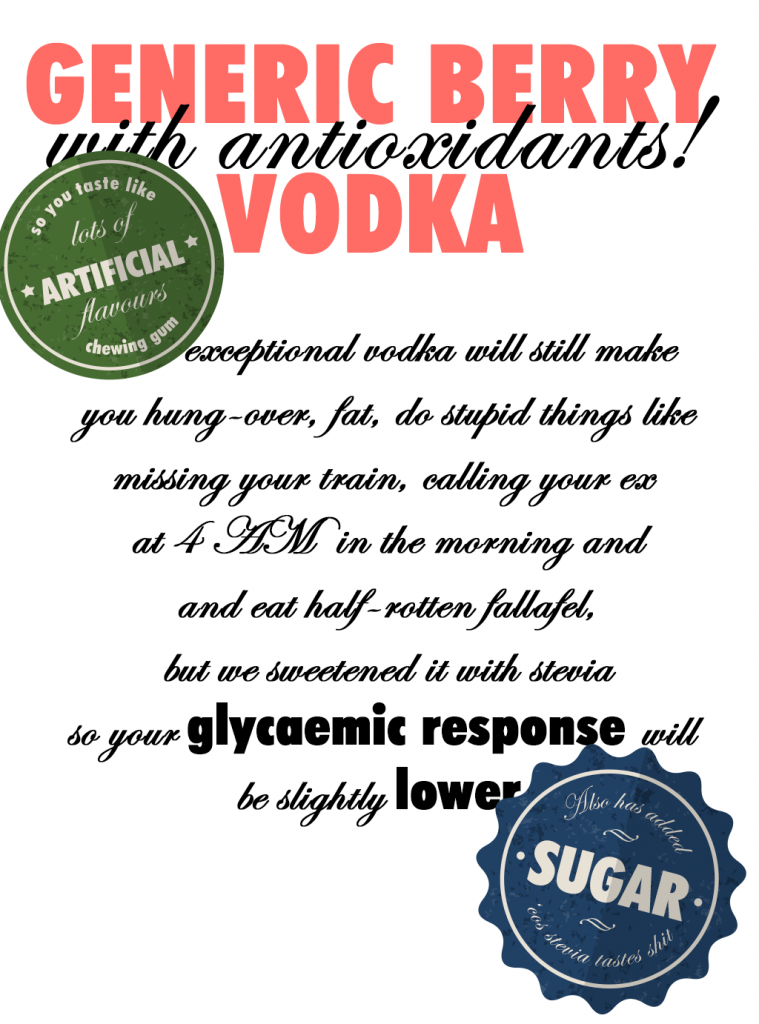Call it low-calorie cocktails, alternative sweeteners or even holistic hedonism; healthy cocktails is one of the main trends experts predict for the years ahead. And while I think it is a very interesting and important topic to discuss, the term healthy cocktails itself is dangerous.
The main problem that I have with this term is that cocktails contain alcohol, and alcohol is bad for your body and there’s no way around it. It’s also great at carrying flavours, it’s steeped in stories and it can change how we view things, and this is why we drink it. But call a cocktail healthy just because it contains agave syrup falls in the same category as calling a Diesel car good for the environment; you’re deceiving yourself, and that is never a good idea. I think responsible drinking is not drinking six Skinny Bitches in half an hour; it is about enjoying the spirits and being aware of the consequences of consuming them.
And don’t get me wrong: I’m not preaching that we should all have two drinks and go home; but if somebody gets sloshed to the gills on Goji Berry Frozen Daiquirí’s thinking that they’re doing something good for themselves, then we have a problem.
Now obviously there’s varying degrees of how much damage a cocktail will do to you, two shots of tobacco-infused Sierra tequila and a canned-pineapple Piña Colada are bound to have a different impact on you than three Cognac Sazeracs. So we can definitely talk about less unhealthy drinks, and although it is not a particularly interesting marketing strategy for spirit companies, it is an interesting topic for us bartenders.
Little note by the side – if this label looks similar to an existing vodka brand, it is not because I hold any particular grudge against them, but rather because their label layout is suited to add lots of information.
So, in the field of less unhealthy drinks, what can we talk about? We can certainly talk about sugar content, there’s a difference between drinking a White Russian and a Gin Rickey; or a bottle of Gewürztraminer and a Champagne Tarlant. Check out the Drinking Man’s Diet if this is a concern of yours.
We can talk about alternatives to sugar; but here the discussion needs to be about flavour, not about calories. There is no sweetener that tastes good and doesn’t add to your waistline. So honey is not necessarily easier on the love handles than sugar, but it’s a different flavour and there are situations when this is welcome. Same goes for agave, maple syrup, melasses and so on and so forth.
Most definitely can we talk about low-alcohol drinks; if you go a whole night drinking double Old Fashioneds and Dry Martinis, you may have a different outlook on the next day than if you’d stuck to the Bamboos and Pimm’s Cups. Dinah Sander’s Art of the Shim is a wonderful book dedicated to low-alcohol drinks, which I think every bartender should read; if only to be able to make a few of these shims when a guest needs to take it slower.
And finally, we can talk about drinks that don’t contain preservatives, artificial flavourings or chemical additives. Here again, the main concern needs to be the flavour, and it is fun and valuable to make your own ingredients. In most cases, home-made ingredients trump the store-bought ones. However, if you need to toss out a bottle of home-made grenadine every other week because it started to ferment, I wonder if you’re really doing yourself and your guests a favour.
These are just some thoughts how we can approach this topic, and I’m keen to see where this trend takes us.

